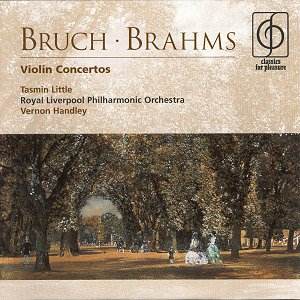 Composer: Joseph Lanner
Composer: Joseph Lanner
Works: Jagd-Galoppe (“Jägers Lust”), op. 82; Die Schönbrunner – Walzer, op. 200; Der Romantiker – Walzer, op. 167; Abend-Sterne – Walzer, op. 180; Marien-Walzer, op. 143; Tarantel-Galopp, op. 125; Die Werber – Walzer, op. 103; Neujahrs-Galopp, op. 61/2; Hofball-Tänze – Walzer, op. 161; Bruder Halt! – Galopp, op. 16; Pesther-Walzer, op. 93; Dampf-Walzer und Galopp, op. 94
Performers: Vienna Johann Strauss Orchestra, Willi Boskovsky (conductor, violin)
Recording: Vienna, 5-8/5/71, Redoutensaal (2-3), 5/72, Simmeringer Hof (1, 4), 17-19/1/1977, Baumgartner Casino (5-12)
Label: EMI CLASSICS CDM 5 74372 2 [75’ 51”]
Joseph Lanner, often overshadowed by his more illustrious contemporary Johann Strauss II, represents an essential link in the Viennese waltz tradition of the early 19th century. His compositions, particularly the waltzes and galops, embody the exuberance and elegance of the Vienna ballrooms, making them a rich tapestry of the social and musical fabric of the era. This recording, conducted by the venerable Willi Boskovsky, offers a glimpse into Lanner’s world, showcasing a selection of his most delightful pieces.
Boskovsky’s interpretation is steeped in the charm of traditional Viennese performance practice, characterized by a light touch and flowing rhythms. His conducting, rooted in his experience as a violinist, allows the string sections to shine, particularly in the waltzes where the violins lead with a sweet, lyrical quality. However, there are moments where his approach feels somewhat restrained, lacking the dynamic interplay that can elevate these pieces from mere pleasantries to engaging dialogues. The waltz structure, while executed with grace, occasionally falls into a predictable pattern, as in the opening of “Hofball-Tänze,” where the counter-melody in the lower strings feels overshadowed rather than dialogued.
The recording quality, typical of the era, is warm yet occasionally lacks the clarity that modern listeners might expect. The orchestra’s sound is rich, but the engineering does not always capture the intricate textures of Lanner’s orchestration. In “Der Romantiker,” for instance, the introduction’s lush wind chords and the romantic interplay between strings and winds could benefit from a more pronounced spatial separation, which would allow the listener to appreciate the harmonic nuances more fully. This is a stark contrast to the previous Stolz recording, which, as noted in earlier critiques, brings out a more vibrant tapestry of sound through careful attention to orchestral color and balance.
A notable feature of this recording is the consistent elegance with which Boskovsky shapes the music. The subtle rubato and careful phrasing in pieces like “Abend-Sterne” reveal his deep understanding of the idiom. However, the performances do not always exhibit the vitality that is so essential in dance music. A particular highlight is the “Neujahrs-Galopp,” where Boskovsky manages to infuse a sense of celebration and joy, albeit without the robust character found in Stolz’s renditions. The charm is palpable, but one yearns for a bit more daring in the interpretative choices.
The comparison with Robert Stolz’s recording is illuminating. Stolz, as a composer himself, imbues his interpretations with a deeper awareness of the underlying structures and emotional currents in Lanner’s music. His grasp of counterpoint offers a more intricate interplay between melodies, creating a richer listening experience. In contrast, Boskovsky’s performances, while delightful, can feel somewhat superficial in comparison, lacking the same degree of textual exploration.
Recording artistry aside, the performance ethos captured by Boskovsky remains endearing, encapsulating the essence of Lanner’s waltzes and galops in a manner that is both nostalgic and inviting. While the execution is polished and the orchestra’s cohesion admirable, the overall interpretation might not satisfy those seeking a more invigorating or profound experience. For listeners who wish to explore Lanner’s oeuvre, this recording serves as a commendable introduction, though it does not overshadow the interpretative depth brought forth by Stolz. The choice between these recordings will ultimately hinge on the listener’s preference for either the graceful elegance of Boskovsky or the more dynamic and characterful approach of Stolz.



